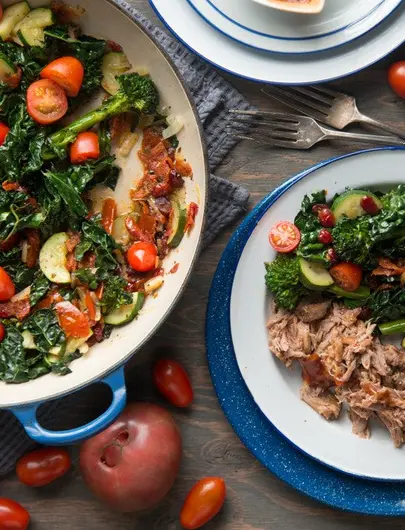Paleo: it’s more than a buzzword, and definitely more than a trend. With cafes popping up left, right and centre and tons of books lining the health shelves, it’s a way of eating that’s not going anywhere. Let’s come out of the cave (sorry, we couldn’t resist!) and break down what it means.
What is Paleo, anyway?
The Palaeolithic diet (also known as the ‘caveman diet’) is based on the idea modern humans should eat a similar diet to their ancient ancestors. Advocates believe today’s fast and processed foods are contributing to the sky-high rates of obesity, diabetes, heart disease and cancer around the world. So they choose to revert to a more primitive lifestyle (when it comes to food at least) in an effort to be healthier and reduce the risk of disease.
While the Paleo concept has been around for a long time, the diet really blew up with the release of Dr Loren Cordain’s book, The Paleo Diet, in 2002. He argued that changing your eating can have lifelong benefits: “It really isn’t a diet, but rather a lifetime program of eating to improve health and well-being and minimise the risk of chronic diseases that plague the Western world.”
So, in a nutshell, Paleo is about swapping out processed foods for nutrient-rich, fresh food – the kind our ancestors would have had to hunt and gather themselves. In other words: they couldn’t just pluck a chocolate bar or packet of chips out of the ground! Sure, we can’t copy their diet exactly (ain’t nobody got time for that), but we can go back to basics, and eat plenty of pure, fresh wholefoods.
What does the Paleo diet involve?
If you’re keen to try the Paleo diet, you’ll need to load up on protein and fibre, and cut out refined sugar and processed food.
Pop these Paleo-friendly in your shopping trolley:
- Meat
- Fish
- Poultry
- Fruit
- Vegetables (especially root veggies)
- Nuts (Except peanuts)
- Healthy oils – including avocados and coconut oil
Part of the Paleo lifestyle is barring any food that’s the result of agriculture, such as: - Legumes
- Grains – including cereals, rice, etc
- Dairy products
- Processed oils – vegetable, canola, etc
- Salt
- Sugar
Pretty strict, huh? While this represents the ideal, hardcore Paleo diet, when it comes to your own life, you can take what you like, and leave what you don’t. Here at GMB, we don’t prescribe to any diet labels, but we are BIG believers in eating more wholefoods, and slowly but surely cutting out processed foods.
Our advice? Start by cutting out refined sugar and processed foods, then go from there.
What’s your opinion on the Paleo diet?

